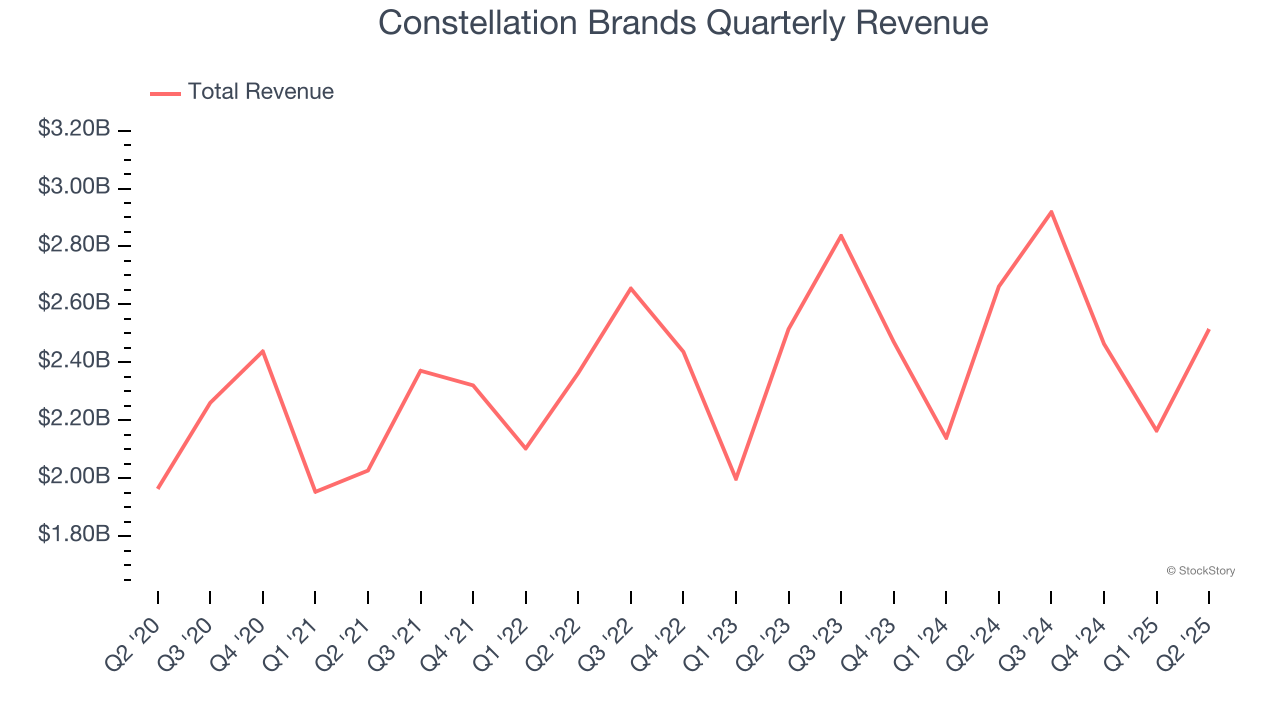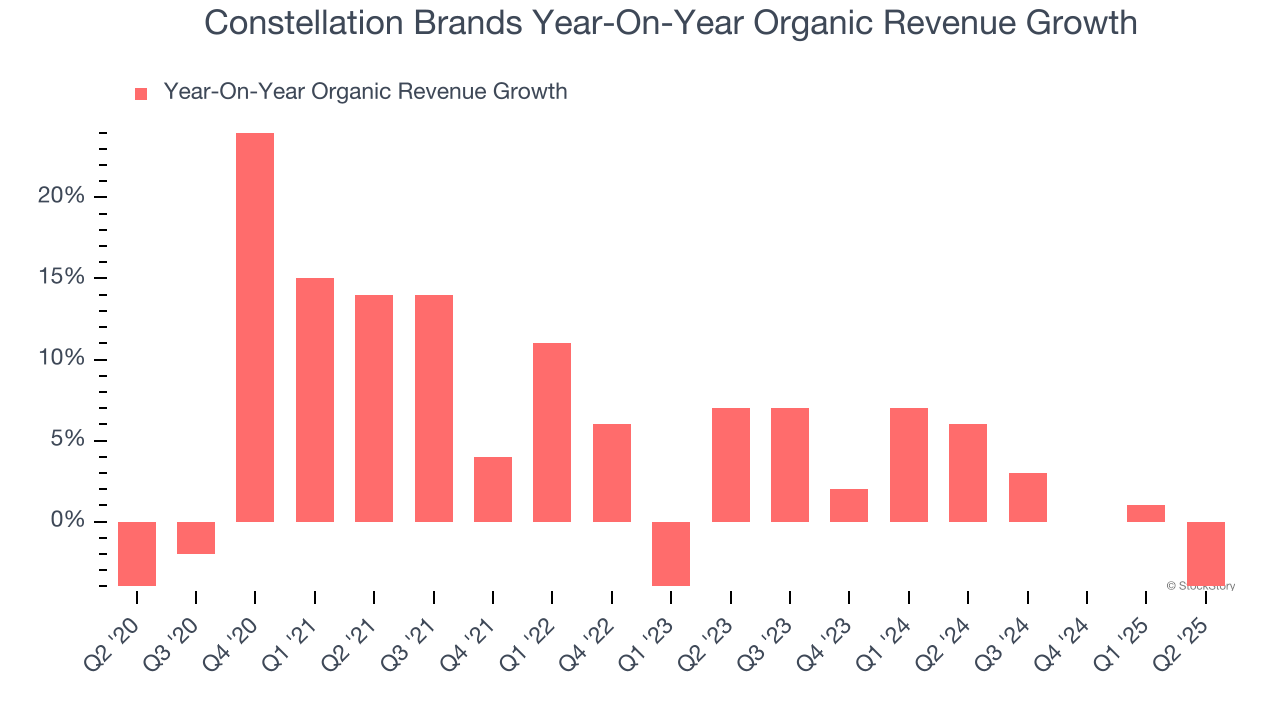
Beer, wine, and spirits company Constellation Brands (NYSE: STZ) missed Wall Street’s revenue expectations in Q2 CY2025, with sales falling 5.5% year on year to $2.52 billion. Its non-GAAP profit of $3.22 per share was 2.3% below analysts’ consensus estimates.
Is now the time to buy Constellation Brands? Find out by accessing our full research report, it’s free.
Constellation Brands (STZ) Q2 CY2025 Highlights:
- Revenue: $2.52 billion vs analyst estimates of $2.55 billion (5.5% year-on-year decline, 1.5% miss)
- Adjusted EPS: $3.22 vs analyst expectations of $3.29 (2.3% miss)
- Adjusted EBITDA: $829.7 million vs analyst estimates of $950.5 million (33% margin, 12.7% miss)
- Management reiterated its full-year Adjusted EPS guidance of $12.75 at the midpoint
- Operating Margin: 28.4%, down from 35.4% in the same quarter last year
- Free Cash Flow Margin: 17.7%, up from 11.8% in the same quarter last year
- Organic Revenue fell 4% year on year (6% in the same quarter last year)
- Market Capitalization: $28.78 billion
Company Overview
With a presence in more than 100 countries, Constellation Brands (NYSE: STZ) is a globally renowned producer and marketer of beer, wine, and spirits.
Revenue Growth
Reviewing a company’s long-term sales performance reveals insights into its quality. Any business can have short-term success, but a top-tier one grows for years.
With $10.06 billion in revenue over the past 12 months, Constellation Brands is one of the larger consumer staples companies and benefits from a well-known brand that influences purchasing decisions. However, its scale is a double-edged sword because there are only a finite number of major retail partners, placing a ceiling on its growth. For Constellation Brands to boost its sales, it likely needs to adjust its prices, launch new offerings, or lean into foreign markets.
As you can see below, Constellation Brands’s 3.2% annualized revenue growth over the last three years was sluggish. This shows it failed to generate demand in any major way and is a rough starting point for our analysis.

This quarter, Constellation Brands missed Wall Street’s estimates and reported a rather uninspiring 5.5% year-on-year revenue decline, generating $2.52 billion of revenue.
Looking ahead, sell-side analysts expect revenue to decline by 6.6% over the next 12 months, a deceleration versus the last three years. This projection doesn't excite us and implies its products will face some demand challenges.
Unless you’ve been living under a rock, it should be obvious by now that generative AI is going to have a huge impact on how large corporations do business. While Nvidia and AMD are trading close to all-time highs, we prefer a lesser-known (but still profitable) stock benefiting from the rise of AI. Click here to access our free report one of our favorites growth stories.
Organic Revenue Growth
When analyzing revenue growth, we care most about organic revenue growth. This metric captures a business’s performance excluding one-time events such as mergers, acquisitions, and divestitures as well as foreign currency fluctuations.
The demand for Constellation Brands’s products has generally risen over the last two years but lagged behind the broader sector. On average, the company’s organic sales have grown by 2.8% year on year. 
In the latest quarter, Constellation Brands’s organic sales fell by 4% year on year. This decline was a reversal from its historical levels. We’ll keep a close eye on the company to see if this turns into a longer-term trend.
Key Takeaways from Constellation Brands’s Q2 Results
The company's revenue and EPS both missed, which is a poor start. However, Constellation Brands did maintain its full-year revenue guidance. Still, this quarter could have been better. The stock remained flat at $165 immediately following the results.
The latest quarter from Constellation Brands’s wasn’t that good. One earnings report doesn’t define a company’s quality, though, so let’s explore whether the stock is a buy at the current price. The latest quarter does matter, but not nearly as much as longer-term fundamentals and valuation, when deciding if the stock is a buy. We cover that in our actionable full research report which you can read here, it’s free.








